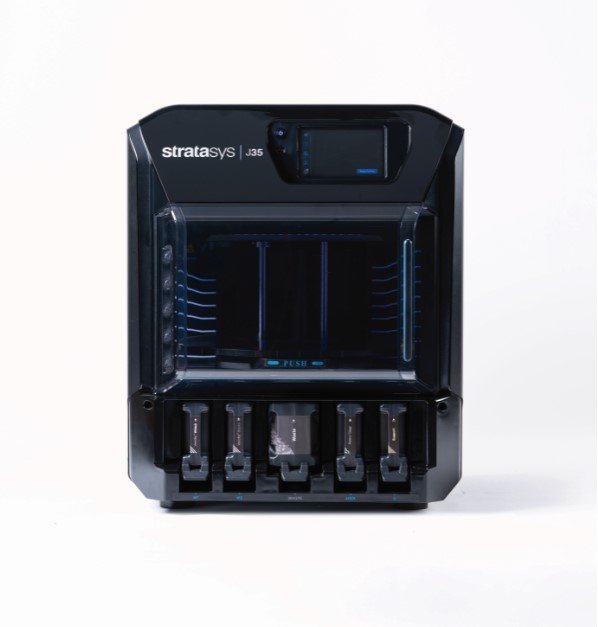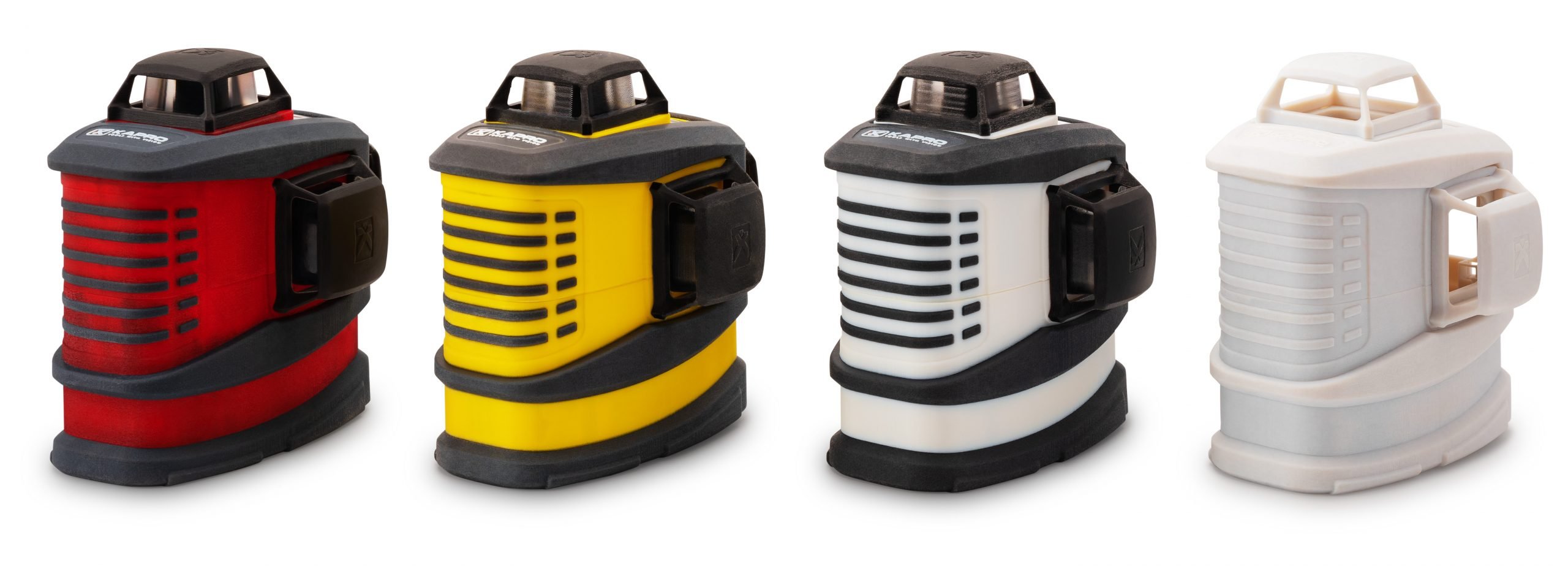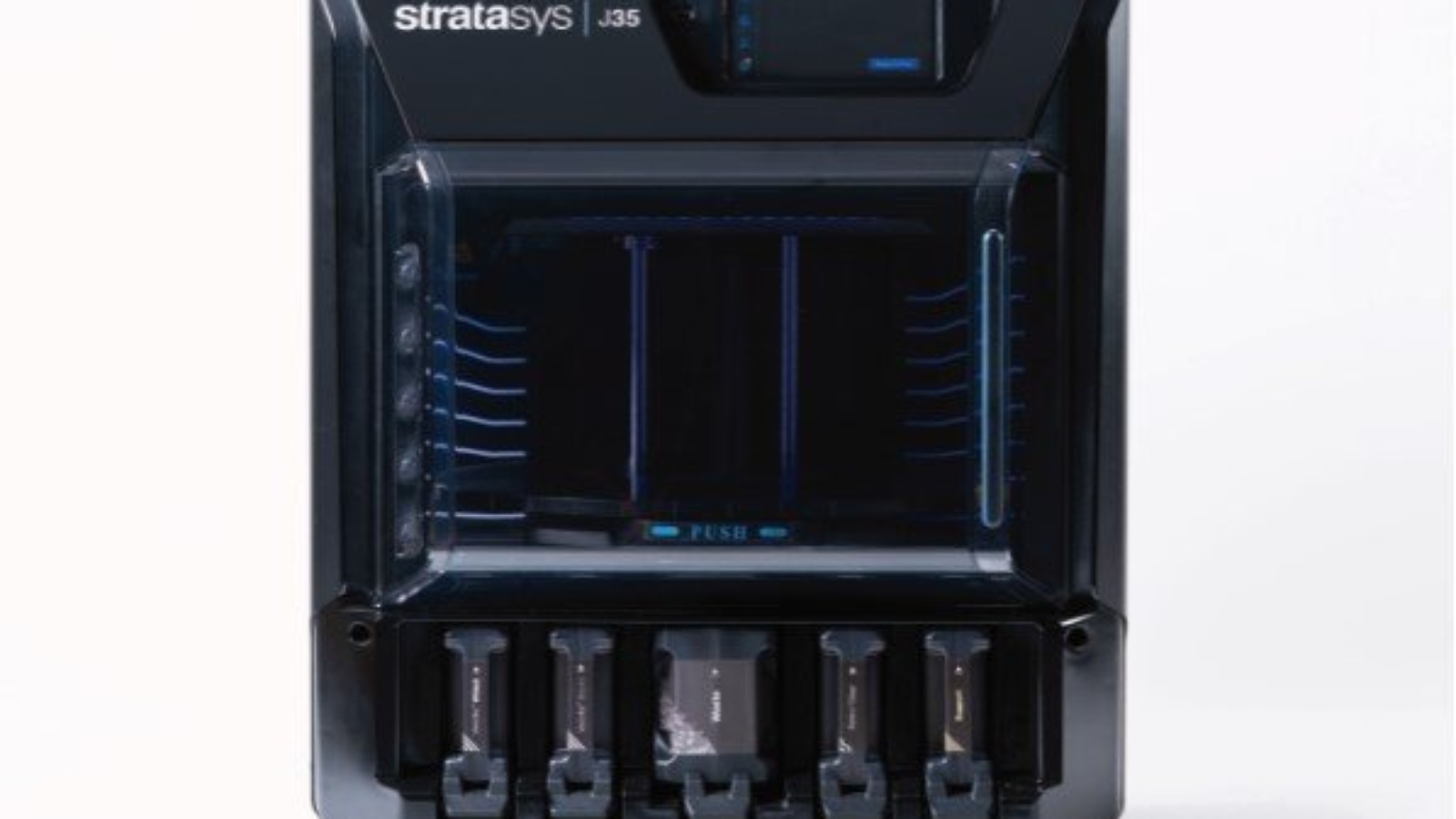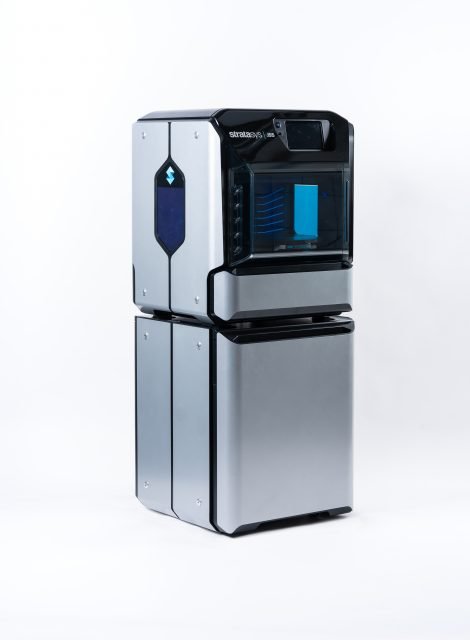Stratasys today launched two new PolyJet 3D printers, the Stratasys J35 Pro, and the Stratasys J55 Prime, along with new software solutions for research and packaging prototyping. The company has accelerated its pace of innovation using PolyJet technology as designers and engineers work to bring new and better products to market faster and more efficiently. The J35 Pro represents the first multi-material 3D printer for the desktop from Stratasys, while the J55 Prime extends the value of the J55 3D printer to include a new set of versatile materials providing tactile, textual, and sensory capabilities in addition to full color.
“We’re in the business of helping designers and engineers translate whatever they can imagine into reality”, said Shamir Shoham, vice president of design for Stratasys. “Through the versatility of multi-material PolyJet 3D printing, our customers can create models and packaging prototypes not only quickly and efficiently, but with remarkable realism that stands out against other 3D printing technology”.
PolyJet to the desktop
The new versatile J35 Pro 3D printer accommodates everything from concept modeling to high-fidelity, realistic, fully functioning models. This new all-in-one, multi-material desktop 3D printer is ideal for the engineering and design office setting. With the J35 Pro, users have the option to combine a variety of materials, including Vero UltraClear, that can be printed simultaneously giving engineers and designers the versatility to produce parts that match their exact needs. The printer can incorporate up to three materials that can be printed as single material parts or combined on the same model part, on the same tray. Applications include over-molding, filling simulation, and printing in full greyscale.
“We find that we spend a great deal of time creating and testing models. If a customer had changes or if it doesn’t work as expected, we would have to go through the process over again. By bringing the J35 Pro into our office, we can now create the models and prototypes in-house, in a day – giving us the ability to iterate, correct errors, and more efficiently verify designs with our customers,” said Yaniv Adir project manager for Taga Innovations, a manufacturing engineering company in Tel Aviv, Israel. “This printer has allowed us to revolutionize the way in which we do business.”
The multi-material capabilities of the printer allow designers and engineers to incorporate the widest variety of grayscale colors and materials into a single print while achieving complex shapes, intricate details, and delicate features. Engineers and designers can not only see what the product will look like, but also test its functionality in the pre-production stage. The J35 Pro also offers a simple design-to-print workflow powered by GrabCAD Print, allowing users to import their designs using native CAD files or 3MF file formats.
Manufacturing on Demand
These packages are 3D printed
The new packaging solution from Stratasys enables designers to easily produce complex, high- transparency, full-color, high-fidelity packaging prototypes that accurately simulate final packaging including realistic color combinations, textures, transparency, and flexibility. This includes the ability to print simulated glass bottles and add “labels” with sharp text and images that meet 2D graphics labeling standards. Furthermore, designers can incorporate simulated products or fillings, like cosmetics, makeup, or liquids, for the ultimate in realistic rapid prototyping. Designers can now create packaging prototypes so real-looking, it’s hard to believe they’re not the real thing. Using Stratasys PolyJet printing designers can create complex, full-color packaging for a range of industries that accurately simulate final packaging
“Ultra-realistic models make the idea real for our clients, enabling an accelerated decision-making process. We are a long way from the bland all-white models we produced prior to 3D printing – today the possibilities are endless”, said Jeremy Garrard, director of market development, design, and R&D for Quadpack, a global packaging provider headquartered in Barcelona, Spain. “Along with the work we do for our QLine range and our customers, the models we produce helps towards influencing and inspiring the industry. As an example, we printed over 500 pieces for QPPackfuture, our annual trend report, in which the team presents its vision for the future of cosmetics packaging, complete with samples”. The Packaging software solution will soon be available through GrabCAD Print and is compatible with Stratasys J8 Prime, Stratasys J7 Series, and Stratasys J55 Prime 3D printers
Prime prototyping on theJ55
The J55 Prime builds on the technology of the Stratasys J55 3D printer introduced in 2020. This new system goes beyond full-color printing with new materials that enable tactile, textual, and sensory capabilities. In addition to the existing highly realistic visual models, the printer utilizes multiple materials that cater to design, functional and biocompatible prototyping, such as Elastico Clear and Elastico Black for flexible, soft-touch printing that accurately simulates the look, feel, and function of rubber-like products; Digital ABS Ivory for high impact designs such as molds, jigs, fixtures, and functional prototypes; Vero ContactClear, a translucent material designed for prolonged skin or bodily contacts such as medical devices, sportswear, or wearables; and ultra-opaque colors, enabled by the VeroUltra family of materials, introduces 2D level graphics and text, vibrant and accurate colors with better plastic simulation, raising the bar in 3D printed multi-material models. The J55 Prime is office-friendly, with a compact design, odor-free and quiet operation; orders are being taken now, with shipping expected in July 2021.
Accelerating innovation with PolyJet
The research package provides users with increased flexibility over the print process, allowing them to explore and experiment with additive manufacturing and accelerate innovation in the lab. Innovators can now use the materials to print with air voids and liquid or embed an object into a print. Truly pushing the boundaries of what is possible, researchers can also use this extended set of materials and capabilities to experiment with 4D printing – the process by which a 3D printed object undergoes a transformation due to the influence of another material or outside element Combined with GrabCAD Voxel Print, software users can define the data volumetrically for each 3D voxel throughout the entire model. This allows for an advanced level of control at a microscopic scale, enabling higher resolutions, fine-tuned color placement, and shore value transitions within one part.

* This article is reprinted from 3D Printing Media Network. If you are involved in infringement, please contact us to delete it.
Author: Andrea Gambini




Leave A Comment